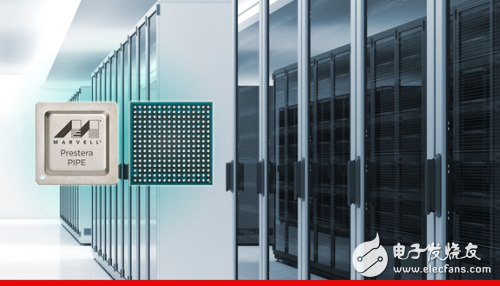Modern lifestyles are increasingly dependent on cloud computing and storage infrastructure. Whether at home, at work, or with smartphones and other mobile computing devices we carry around, the need for cloud computing and storage is everywhere. Especially with the rapid development of big data and the Internet of Things, the demand for such infrastructure is growing at an alarming rate. As the number of applications and users increases, its annual growth rate is about 30 times per year, and in some cases even 100 times. Such high growth rates make it difficult for Moore's Law and new chip development to meet the needs of computing and network infrastructure. To this end, many data and communication network vendors solve this problem by investing in multiple parallel computing and storage methods. In this way, many cloud data centers are currently forming hundreds or even thousands of servers connected together.

As more and more switches are needed, the interconnection of all these computing and storage devices is becoming a real challenge. In the data center, the traditional network connection method is layered, in which a single rack uses a leaf switch (also known as a rack switch, that is, a ToR switch) to achieve intra-rack connectivity, while a trunk switch is used for a trunk switch. Connect a range of racks and core switches for the entire data center. Moreover, like the server and storage device itself, these switches need to be managed. In the past few years, there have usually been one or two vendors that provide network switches and related management control software for data centers, but the situation has changed rapidly. Many leading cloud service providers rely on their strong purchasing power and technical capabilities to realize that they can save a lot of money by designing and building their own network equipment. In the data center industry, many people think this is the first step in disrupting traditional network hardware and its control management software. Cloud service providers have their own software engineers, so they develop management software internally and outsource hardware design. Although this satisfies the business needs of data center operators to a certain extent, from the perspective of technical and operational management, there is no simplification, and a large number of switches need to be managed.
In 2009, with the introduction of the port extender we now know, the first breakthrough was achieved in simplifying network complexity. This concept is based on the idea that many nodes in the network do not require the superior management capabilities of most switches. This is similar to the parent-child relationship, where the control switch is the "mother" and the managed switch is the "child" and the port expander provides the connection. This port expander method was included in the network standard 802.1BR in 2012, and every network switch currently developed meets this standard. The technology of the port expander is not complicated. Compared with the full bridge switch, in addition to lower power consumption, the most obvious advantage is the reduction of unit cost.
The method of controlling the bridge and port expander helps simplify the management of the network switch, but it does not stop there. Go deep into the port expander and you'll find the same switch chip used as the "mother" bridge switch. Switch vendors don't have chips designed specifically for port expanders, but continue to use their standard chipsets, so they don't fully reduce cost and power. However, with the introduction of Marvell's 802.1BR-compatible port expander IC (called PIPE - Passive Smart Port Extender), the true modular approach to network switching has made a leap forward, enabling the implementation of bridged switches with all industry-leading OEMs. Interoperability. It also has a high cost and power advantage, which is why port expander technology can be noticeable at once. In the second step of network decomposition, this method effectively separates the port connection from the processing power of the parent switch and establishes a more modular networking method. The parent switch no longer needs to know what type of device it is connected to. Therefore, all logic and processing functions can be concentrated on the parent switch, and the port expander assumes port I/O functions.
Marvell's Prestera® PIPE family targets data centers operating at 10GbE and 25GbE speeds, and as bandwidth requirements increase, these data centers face the challenge of further reducing CAPEX and OPEX costs. The Prestera PIPE family enables the deployment of top-of-rack switches at half the cost and power of traditional Ethernet Switches. The PIPE approach also includes fast failover and resilient recovery capabilities that are critical to the continuity and high availability of critical infrastructure.
China Gigabit Switch,Industrial Network Switch supplier & manufacturer, offer low price, high quality Unmanaged Industrial Switches,Ethernet 10 Port Switch, etc.Focus on Professional R&D and manufacture of industrial switch ,unmanaged switch .
Also known as Industrial Ethernet Switch, which is an Ethernet switch device used in industrial control. Due to the adopted network standard, it is open, widely used, and inexpensive. It uses a transparent and unified TCP/IP protocol. The network has become the main communication standard in the field of industrial control.
Industrial switches feature carrier-grade performance to withstand harsh environments. With a wide range of products and flexible port configurations, it can meet the needs of various industrial fields. The product features a wide temperature design with a protection rating of no less than IP30 and supports standard and proprietary ring redundancy protocols
Gigabit Switch,Industrial Network Switch,Unmanaged Industrial Switches,Ethernet 10 Port Switch
Shenzhen Scodeno Technology Co.,Ltd , https://www.scodenonet.com
![<?echo $_SERVER['SERVER_NAME'];?>](/template/twentyseventeen/skin/images/header.jpg)